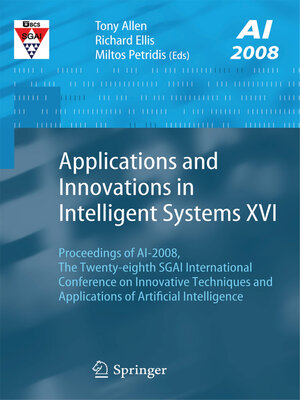Applications and Innovations in Intelligent Systems XVI
ebook ∣ Proceedings of AI-2008, The Twenty-eighth SGAI International Conference on Innovative Techniques and Applications of Artificial Intelligence
By Tony Allen

Sign up to save your library
With an OverDrive account, you can save your favorite libraries for at-a-glance information about availability. Find out more about OverDrive accounts.
Find this title in Libby, the library reading app by OverDrive.



Search for a digital library with this title
Title found at these libraries:
| Library Name | Distance |
|---|---|
| Loading... |
Swallowing sound recognition is an important task in bioengineering that could be employed in systems for automated swallowing assessment and diagnosis of abnormally high rate of swallowing (aerophagia) [1], which is the primary mode of ingesting excessive amounts of air, and swallowing dysfunction (dysphagia) [2]-[5], that may lead to aspiration, choking, and even death. Dysphagia represents a major problem in rehabilitation of stroke and head injury patients. In current clinical practice videofluoroscopic swallow study (VFSS) is the gold standard for diagnosis of swallowing disorders. However, VFSS is a ti- consuming procedure performed only in a clinical setting. VFSS also results in some radiation exposure. Therefore, various non-invasive methods are proposed for swallowing assessment based on evaluation of swallowing signals, recorded by microphones and/or accelerometers and analyzed by digital signal processing techniques [2]-[5]. Swallowing sounds are caused by a bolus passing through pharynx. It is possible to use swallowing sounds to determine pharyngeal phase of the swallow and characteristics of the bolus [2].







